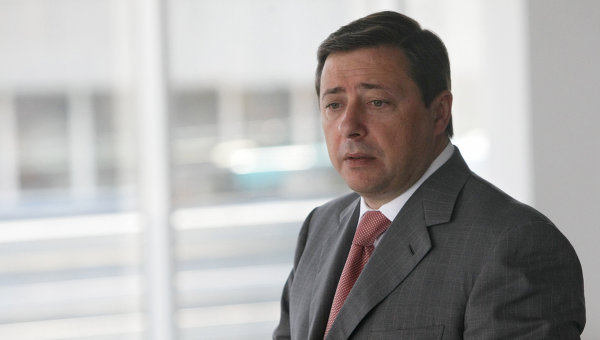
Moscow’s Preliminary Plans to Invest Even More Heavily In the North Caucasus Raise Skepticism
Publication: Eurasia Daily Monitor Volume: 8 Issue: 144
By:

On July 25, the Russian ministry for regional development unveiled Moscow’s draft plan to invest $140 billion in the development of the North Caucasus over 2012-2025. Most of the investment, $93 billion, will come directly from Russia’s state budget. The funds appear to have been distributed among the six North Caucasian republics and the Russian-speaking Stavropol region according to the level of volatility of each republic. For example, one of the most unstable territories in the North Caucasus, Dagestan, is expected to receive 32.5 percent of the overall sum, while the fairly quiet Stavropol region – which has about the same number of people as Dagestan, close to 3 million people – will receive only 7.7 percent. Kabardino-Balkaria, with less than 1 million people, is projected to receive 19.4 percent of the general disbursement (www.minregion.ru, July 25).
Chechnya, with its special relationship with Moscow, is expected to receive only 12.3 percent of the funds. This may be explained by other channels for financing Grozny that are not reflected in the government’s budget openly; unless it is a step by Moscow deliberately crafted to curb Ramzan Kadyrov’s influence.
The new state program for the development of the North Caucasus is expected to supersede the current multitude of federal programs for each republic. The proposed level of expenditure is 10 times higher than what Russia currently spends on developing the region. Even the territories of Russia’s Far East or north, which traditionally consume a large amount of government resources per capita, do not receive nearly that much money from Moscow (www.kommersant.ru, July 26).
Sources in the Russian government have expressed skepticism about such a large allotment of funds. “Even taking into account the election year, the size of the state program [for the North Caucasus] may turn out to be completely unaffordable,” a source in the Russian ministry for economic development told Kommersant. Meanwhile, the program is progressing quickly toward final approval. The first meeting on the program is scheduled to take place on July 29, chaired by Moscow’s envoy to the North Caucasus, Aleksandr Khloponin, and by August 1, the program should be ready for the government’s consideration (www.kommersant.ru, July 26).
The Russian government appears to have chosen the path of escalating promises to the North Caucasus as parliamentary and presidential elections approach. Until recently, Moscow was pledging to invest $15 billion in ski resorts in the North Caucasus. Many experts doubted the feasibility of tourism in the North Caucasus, given the spread of armed militancy, as well as the financial side of the project. Now that Moscow has upped its investment pledges for the North Caucasus, there will probably be more questions about how realistic these plans are. A connection to the upcoming elections in Russia may be reflected in the funds’ allocation pattern over the years. The figures for investments in the North Caucasus in 2012 and 2013 are $2.3 billion and $2.9 billion, respectively, while in 2014 the amount of investment goes up to over $14 billion and stays close to this number almost until the end of the program in 2025 (www.minregion.ru, July 25). The logic of this accounting is simple: people might remember numbers for the next one or two years, but are unlikely to remember what is planned beyond that.
The Gazeta.ru website observed in a commentary that the longevity of the program, 14 years, is the most “eloquent element of the program.” The commentary suggested that such advanced planning reflected Moscow’s opinion that turning the North Caucasus into an attractive place for investors was a hopeless enterprise. “If the authorities’ logic is to give a push to the economic development of the North Caucasus, the question arises: do such slow pushes exist?” the Gazeta.ru commentary mused (https://gazeta.ru/comments/2011/07/26_e_3711065.shtml).
Another important dimension of the government’s plans is how they will be received in the ethnic Russian regions. Many ethnic Russian regions are no better off, to say the least, than the North Caucasian republics, and their residents may wonder why the scarce resources of the Russian Federation are flowing into the North Caucasus. Already tense ethnic relations in the country may become even worse if Russian people feel that Moscow is spending more on the non-Russian population of the North Caucasus than on the ethnic Russian-populated regions.
A recent poll conducted by the Russian Academy of Sciences and Germany’s Friedrich Ebert Foundation found that the Russian public’s readiness to turn to violence is unprecedented. Forty percent of those polled stated they would approve the forcible expulsion of people of other ethnicities from their town. Asked whether they would “shoot all those who are guilty for the situation in the country as it is currently,” 34% confirmed having such a wish. The rise of aggressive attitudes toward others, most often meaning North Caucasians and other non-Russian ethnicities, is combined with a nearly pacifist attitude toward the past two wars in Chechnya. Ninety percent of those polled said they were against both wars, while 65 percent supported the right of the people who do not want to peacefully live in the Russian Federation to secede (https://mn.ru/newspaper_country/20110623/302724641.html).
As Russian nationalism rises, it may not only pose a danger to Russia’s stability, but also could push the government in Moscow to weigh more carefully its ability to so profligately spend money on the North Caucasus. At the same time, Moscow is increasingly becoming a hostage of its own declarations to solve nearly all the problems in the North Caucasus by allocating more money. The logic that follows is that the emerging relationship between Moscow and the North Caucasus is becoming commercialized. Increasingly, it seems that nothing but the financial flows from Moscow keep this region inside the Russian Federation.




